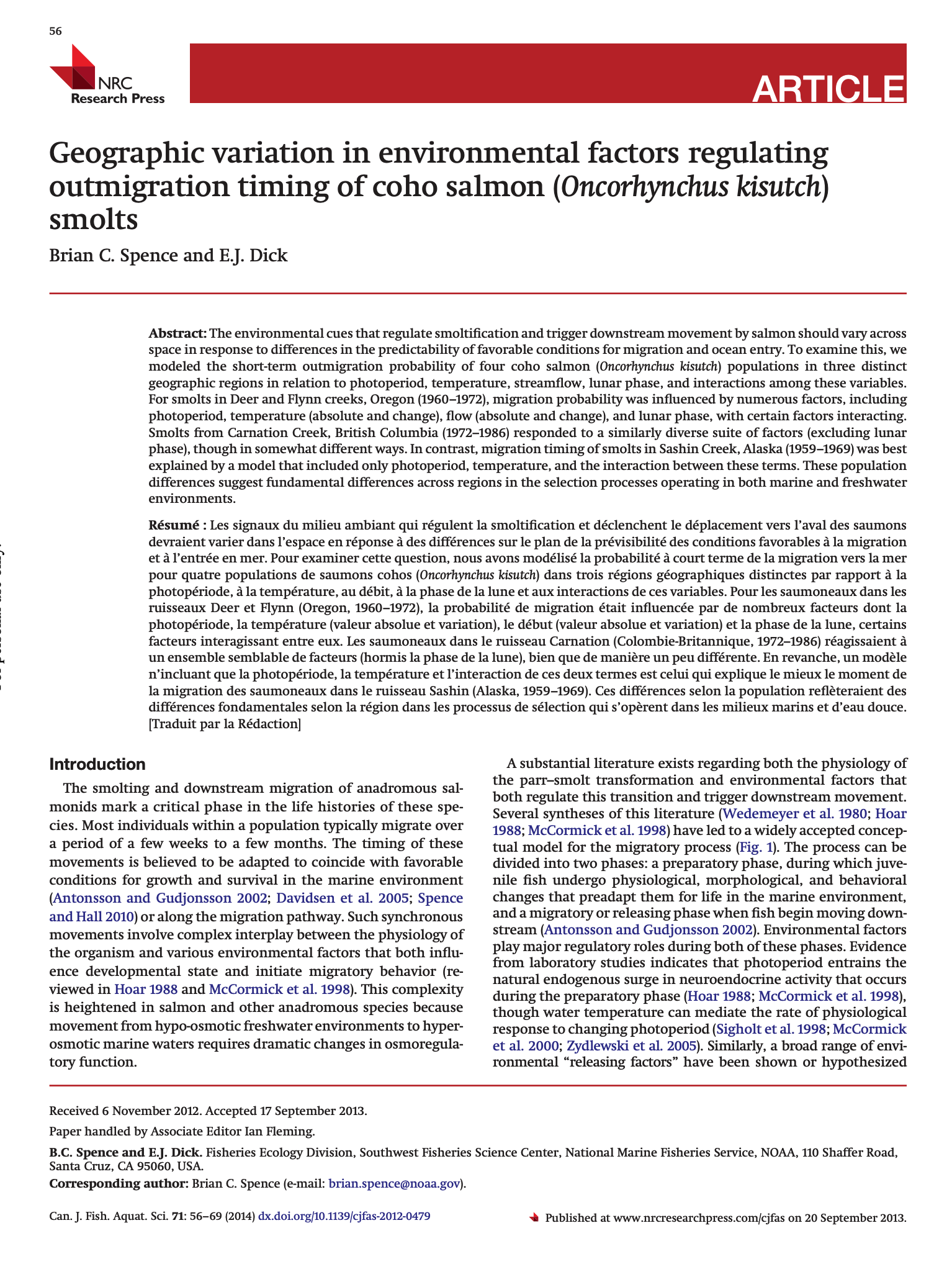
The environmental cues that regulate smoltification and trigger downstream movement by salmon should vary across space in response to differences in the predictability of favorable conditions for migration and ocean entry. To examine this, we modeled the short-term outmigration probability of four coho salmon (Oncorhynchus kisutch) populations in three distinct geographic regions in relation to photoperiod, temperature, streamflow, lunar phase, and interactions among these variables. For smolts in Deer and Flynn creeks, Oregon (1960–1972), migration probability was influenced by numerous factors, including photoperiod, temperature (absolute and change), flow (absolute and change), and lunar phase, with certain factors interacting. Smolts from Carnation Creek, British Columbia (1972–1986) responded to a similarly diverse suite of factors (excluding lunar phase), though in somewhat different ways. In contrast, migration timing of smolts in Sashin Creek, Alaska (1959–1969) was best explained by a model that included only photoperiod, temperature, and the interaction between these terms. These population differences suggest fundamental differences across regions in the selection processes operating in both marine and freshwater environments.
